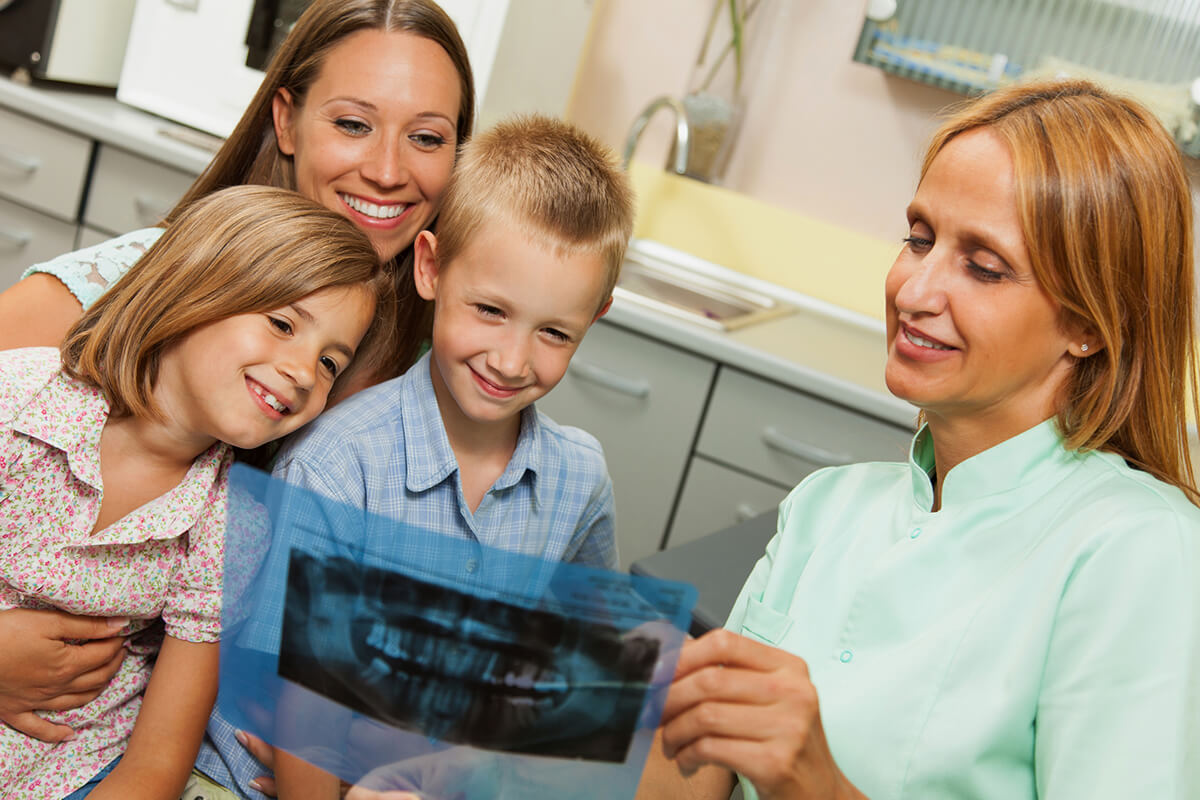Dental X-Rays, also called radiographs, are images of the mouth and face that show what is underneath the visible tissues. It is a valuable diagnostic tool that allows dentists to detect a wide variety of potential problems that may need to be addressed, from cavities to soft tissue abnormalities.
When is it safe for a child to have their first dental X-Ray? Here’s what most pediatric dentists and pediatricians recommend.
First Visit to the Dentist
Many parents are surprised to learn that children should have their first dental visit by their first birthday. It may seem early, but oral health issues can develop in infancy and teeth are susceptible to decay as soon as they have erupted through the gums. Since most children get their first tooth between the ages of 6 and 12 months, dental care should begin in infancy.
The first dental visit typically entails a brief oral examination and dental cleaning, according to the comfort level of the child and parent. The ultimate goal is to introduce the child to the idea of going to the dentist and establish a positive association with the process. When children get used to going to the dentist from a young age, they are less likely to develop fear or anxiety.
First Dental X-Ray
Although the first dental appointment should occur around age one, the first dental X-Ray will likely not take place for another year or more. The first dental X-Ray could be taken around the age of 2 or 3. Some dentists wait until the age of 5 or 6 unless there is an indication of a problem that may need to be addressed.
Are Dental X-Rays Safe For Children?
The safety of dental X-Rays is often questioned because the process involves the use of radiation. While over-exposure to radiation can have negative effects on health, a low amount of radiation is safe.
Dental X-Rays are almost exclusively digital these days. Digital X-Rays use just a fraction of the radiation that was required for film X-Rays in the past. The exposure to radiation is minimal and is precisely focused on just the mouth and lower part of the face. In an abundance of caution, a protective apron is placed over the patient’s body to protect the vital organs from exposure to radiation during dental X-Rays.
Ultimately, the risk of health implications from radiation exposure from dental X-Rays is so low that the benefits outweigh the potential concerns.
Benefits of Dental X-Rays
Dental X-Rays offer many benefits to patients:
- Locating cavities. Cavities often develop in places that are not highly visible, such as between the teeth and along the gumline. Dental X-Rays help to locate cavities so that they can be treated early before they worsen and threaten the health of the tooth.
- Early detection of soft tissue abnormalities. Soft tissue abnormalities such as tumors and cysts are most often benign. However, if oral cancer is present, early detection greatly increases the chance of a positive outcome with treatment.
- Assessing tooth development. Dental X-Rays show what is under the gums, which includes permanent teeth as they develop. It is important for dentists to assess the development of the teeth that have not yet come in as well as the visible teeth.
- Analyzing jaw shape and position. The shape and position of the jaw will affect bite alignment and the potential need for orthodontic treatment. X-Rays allow dentists to analyze the jaw bone at an early age so that growth modification can be implemented if necessary to potentially reduce the extent of later orthodontic treatment.
Schedule a Dental Visit Today
Whether or not your child has had dental X-Rays, it is important to have regular oral examinations and dental cleanings every 6 months. Once your child is old enough for dental X-Rays, they are typically taken once a year during one of the two routine dental visits. Dental Associates For Kids Only provides preventative dental care for children that includes dental X-Rays when appropriate.
Call 516-625-3806 or contact us today to learn more and schedule an appointment.

